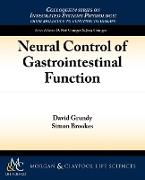- Start
- Neural Control of Gastrointestinal Function
Neural Control of Gastrointestinal Function
Angebote / Angebote:
The gastrointestinal tract is a long, muscular tube responsible for the digestion of food, assimilation of nutrients and elimination of waste. This is achieved by secretion of digestive enzymes and absorption from the intestinal lumen, with different regions playing specific roles in the processing of specific nutrients. These regions come into play sequentially as ingested material is moved along the length of the GI tract by contractions of the muscle layers. In some regions like the oesophagus transit it rapid and measured in seconds while in others like the colon transit is measured in hours and even days, commensurate with the relative slow fermentation that takes place in the large bowel. An hierarchy of controls, neural and endocrine, serve to regulate the various cellular targets that exist in the gut wall. These include muscle cells for contraction and epithelial cells for secretion and absorption. However, there are complex interactions between these digestive mechanisms and other mechanisms that regulate blood flow, immune function, endocrine secretion and food intake. These ensure a fine balance between the ostensibly conflicting tasks of digestion and absorption and protection from potentially harmful ingested materials. They match assimilation of nutrients with hunger and satiety and they ensure that regions of the GI tract that are meters apart work together in a coordinated fashion to match these diverse functions to the digestive needs of the individual. This ebook will provide an overview of the neural mechanisms that control gastrointestinal function.
Table of Contents: Neural Control of Gastrointestinal Function / Cells and Tissues / Enteric Nervous System / From Gut to CNS: Extrinsic Sensory Innervation / Sympathetic Innervation of the Gut / Parasympathetic Innervation of the Gut / Integration of Function / References
Folgt in ca. 10 Arbeitstagen
